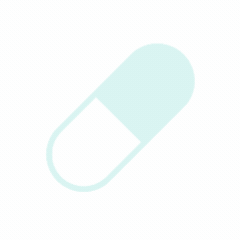Drug updated on 12/11/2024
| Dosage Form | Capsule (oral; 120 mg, 240 mg) |
| Drug Class | Nuclear factor (erythroid-derived 2)-like 2 (Nrf2) activators |
| Ongoing and Completed Studies | ClinicalTrials.gov |
Indication
- For the treatment of relapsing forms of multiple sclerosis (MS), to include clinically isolated syndrome, relapsing-remitting disease, and active secondary progressive disease, in adults.
Latest News

Summary
- This summary is based on the review of 16 systematic review(s)/meta-analysis(es). [1-16]
- Relapse Rates and Disease Activity: Dimethyl fumarate demonstrated a moderate relapse rate reduction over 24 months (relative risk (RR) 0.62, 95% confidence interval (CI) 0.55 to 0.70), with greater efficacy when disease-modifying therapies (DMTs) were continued into early pregnancy rather than discontinued. Cladribine tablets outperformed dimethyl fumarate in achieving no evidence of disease activity-3 (NEDA-3) (odds ratio (OR)=1.76, 95% CrI (credible interval): 1.02-3.03).
- Disability Progression: Ozanimod showed improved outcomes over dimethyl fumarate for confirmed disability progression (CDP) at 3 months (hazard ratio (HR) 0.67, 95% CI 0.53-0.86); however, no significant difference was observed at 6 months. Natalizumab was more effective for high-risk patients, while dimethyl fumarate showed effectiveness in low-risk patients.
- Treatment Adherence: Dimethyl fumarate demonstrated a high adherence rate, with approximately 78.5% of patients maintaining adherence at one year (medication possession ratio (MPR) ≥80%).
- Comparative Efficacy with Other Oral Disease-modifying Drugs (DMDs): Dimethyl fumarate showed a slightly lower relapse risk than teriflunomide (RR = 0.92) and demonstrated moderate effectiveness compared to fingolimod, which exhibited superior magnetic resonance imaging (MRI) and annualized relapse rate (ARR) outcomes.
- Safety: Dimethyl fumarate displayed a non-inferior risk of serious adverse events (SAEs) compared to placebo (RR 0.79, 95% CI 0.67 to 0.93). It was associated with a higher risk of treatment discontinuation due to adverse events relative to teriflunomide (RR 1.07, p = 0.007), with commonly reported adverse events including gastrointestinal disturbances and flushing. Dimethyl fumarate and glatiramer acetate had a favorable safety profile, showing lower withdrawal rates due to adverse events compared to interferon beta-1a and fingolimod.
- Additional Findings: Evidence indicates dimethyl fumarate shows protective effects against relapses when used preconception and during early pregnancy, is effective for low-risk patients compared to high-risk patients who benefit more from natalizumab, demonstrates varying relapse risk reductions in younger and treatment-naive patients, does not increase the risk of SARS-CoV-2 infection or severe COVID-19, and is associated with PML cases where younger age and lower John Cunningham virus (JCV) viral load present favorable prognostic factors.
Product Monograph / Prescribing Information
| Document Title | Year | Source |
|---|---|---|
| Tecfidera (dimethyl fumarate) Prescribing Information. | 2024 | Biogen, Research Triangle Park, NC |

